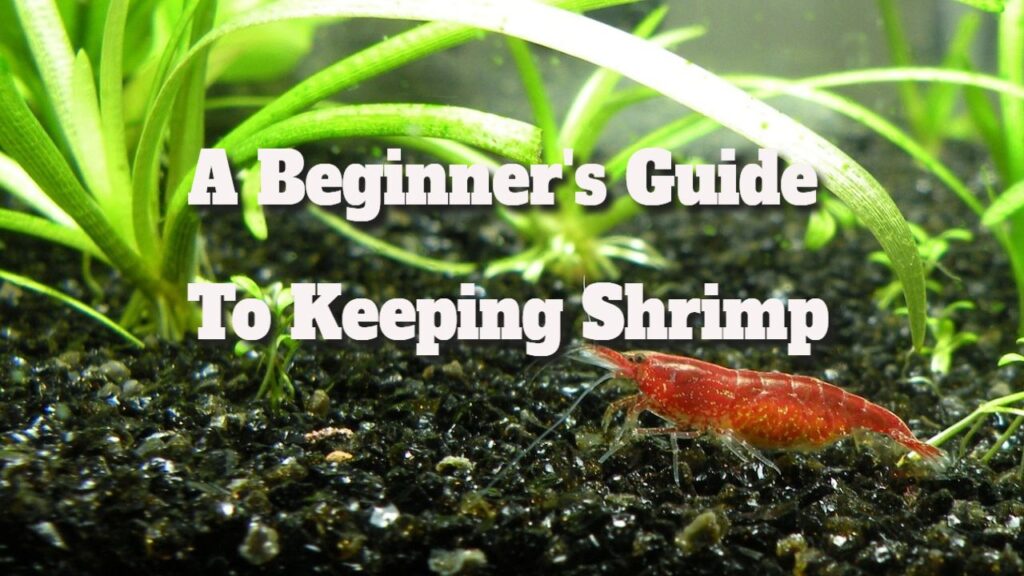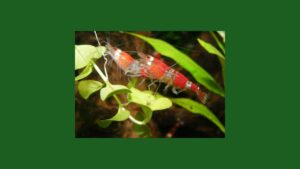Master the Art of Shrimp Care in Your Aquarium for a Thriving Ecosystem
Discover the Joy of Keeping Vibrant Shrimp as Unique Aquatic Companions
Managing a fish aquarium brings a sense of accomplishment, but incorporating shrimp can elevate your experience to new heights by adding striking colors and fascinating behaviors. This detailed guide is designed to provide you with essential information on how to care for these engaging, colorful, and prolific creatures within your aquarium setup. Understanding the specific requirements and traits of various shrimp species is crucial for ensuring their optimal health and successful reproduction. The choice of shrimp species directly impacts the ease of care and breeding success, so let’s delve into the best options available for your shrimp-keeping adventure.
Shrimp varieties can generally be divided into three main classifications:
Neocaridina shrimp
Caridina shrimp
Other varieties
Among these categories, Neocaridina shrimp stand out as the most cost-effective and beginner-friendly option, making them the ideal focus of this guide for those eager to embark on their shrimp-keeping journey.
Dive into the Unique Traits of Neocaridina Shrimp for Your Aquarium
Known for their robust nature, adaptability, and prolific breeding habits, Neocaridina Davidi, commonly called the dwarf cherry shrimp, is an exceptional choice for aquarists, particularly those new to this rewarding hobby. These shrimp showcase an impressive array of color morphs, such as vibrant red, blue, black, and green, all selectively bred to accentuate their stunning hues. However, it’s important to avoid mixing different color variations within the same aquarium, as this could result in unappealing offspring that may appear bland or transparent. Personally, I find the “blue dream” and “black rose” color variations especially captivating.
When considering the purchase of shrimp, it’s vital to remember that they are inherently social creatures that thrive in groups. Therefore, it is highly recommended to house at least ten individuals together; starting with only a few can lead to shyness and a lack of engagement in their natural behaviors, such as exploring and foraging. Many beginners make the common mistake of introducing just a couple of shrimp into their community tank, only to regret the absence of these lively and captivating creatures later on.
Choosing Compatible Fish Species to Enhance Your Shrimp Habitat
Selecting the right tank mates for your shrimp is essential for their overall health and happiness. Large or aggressive fish species pose a significant threat to shrimp, as they may view them as prey. Species such as barbs, bettas, and other similar fish can create a stressful environment for shrimp, often leading to injury or death. For optimal outcomes, consider setting up a shrimp-only aquarium or pairing them with small, peaceful fish species like ember tetras or corydoras. Additionally, ensure your aquarium is well-planted and spacious; shrimp flourish in environments rich in vegetation and ample water volume, which provide both safety and stimulation for their natural behaviors.
Maintain Ideal Shrimp Population Density for a Healthy Aquarium
Despite their small size and minimal waste output, shrimp can thrive in moderately populated tanks with the right management. It is advisable to maintain a population density of 10-15 shrimp per five gallons of water. For optimal breeding conditions, a larger tank of at least 20 gallons is recommended. When Neocaridina shrimp feel secure and comfortable in their environment, they tend to reproduce prolifically, often resulting in an adorable array of tiny shrimplets without requiring special intervention from you as their caretaker.
Be aware that many fish species will eagerly consume baby shrimp, so if you wish to ensure the survival of your shrimplets, you might consider maintaining a dedicated shrimp tank or one that is heavily planted. I have successfully managed a large breeding colony in my high-tech, densely planted setup, which included only a minimal fish population, thereby ensuring the young shrimp remained safe.
Originating from the temperate, shallow waters of Asia, Neocaridina shrimp possess a remarkable ability to thrive without the need for a heater, provided that the ambient temperature in your home remains stable within a range of 65-80°F throughout the year. My observations indicate that they are most active and content at temperatures between 70-76°F. These shrimp prefer relatively soft, acidic water and tend to breed best at a pH level of 6.8-7.5, with a general hardness (GH) of 4-6 and a lower carbonate hardness (KH). While they can adapt to various conditions, it is advisable to avoid extremely hard water for their long-term health.
Although caring for shrimp can be simpler than keeping fish in many ways, they are particularly sensitive to fluctuations in water chemistry. Be mindful that they are highly susceptible to copper and other metals; thus, excessive iron fertilization to encourage the growth of red plants or water additives containing copper can lead to rapid mortality. A balanced amount of iron in a complete plant fertilizer is generally safe at low levels and can help achieve vibrant red plants without harming your Neocaridina shrimp.
Key Practices for Monitoring Water Quality to Ensure Shrimp Well-Being
Shrimp are particularly sensitive to sudden changes in water conditions, often more so than fish. If you notice your shrimp displaying erratic behavior after a water change, such as swimming aimlessly, it is a clear indication that they are unhappy with the new water parameters. Regular water changes are essential to avoid waste accumulation; ideally, aim to perform changes at least once a week, with two 30% changes proving more effective than a single 50% change.
In my high-tech aquarium, I execute frequent water changes, and my shrimp thrive because I meticulously match the new water to the existing parameters in the tank. You can find more comprehensive details about optimal water management in my previous article on understanding water parameters. If shrimp struggle to acclimate to new water conditions, they may exhibit distressing behaviors such as jumping or may even perish; however, healthy shrimp typically do not jump or attempt to escape when they are satisfied with their environment.
For enthusiasts interested in maintaining shrimp populations in high-tech settings, it’s noteworthy that many hobbyists have successfully bred Neocaridina shrimp in setups with CO2 supplementation. It is crucial to monitor CO2 levels to prevent excessive concentrations, which can be effectively managed using a drop checker that indicates when levels are in the safe green zone versus the harmful yellow zone. Additionally, keep an eye on pH fluctuations caused by varying CO2 levels to ensure a stable environment.
Simple and Balanced Feeding Strategies for Optimal Shrimp Nutrition
When it comes to nutrition, shrimp are opportunistic scavengers with relatively low dietary requirements compared to fish. In a community tank, they often thrive without targeted feeding since they will consume leftover fish food, algae, and biofilm present in their environment. Conversely, in a dedicated shrimp tank or one with minimal fish, it is beneficial to provide additional food a few times each week, ensuring that any uneaten food is removed after about an hour to maintain optimal water quality. Personally, I have achieved excellent results by feeding my shrimp SL-Aqua M.O.R.E White pellets, which provide balanced nutrition.
Having successfully kept and bred Neocaridina shrimp in my high-tech planted tanks for several years without encountering significant issues, I hope this guide equips you with the essential knowledge needed for successful shrimp-keeping. With the right care and environment, you can nurture a self-sustaining shrimp population, eliminating the need for constant repurchases.
The Article: Keeping Shrimp: A Beginner’s Essential Guide Appeared First On Unity Pets.
The Article Shrimp Care: Essential Guide for Beginners Was Found On https://limitsofstrategy.com



Your exploration of shrimp care is incredibly insightful, especially when considering the unique roles these vibrant creatures can play in an aquarium ecosystem. As someone who has recently ventured into the world of shrimp keeping, I’ve come to appreciate not just their aesthetic appeal but also their fascinating behaviors and interactions within a community tank.
I thoroughly enjoyed your take on shrimp care—it’s like discovering an overlooked gem in the world of underwater companions! I have a friend who’s convinced that adding Neocaridina shrimp to any aquarium is like throwing a fabulous house party for fish. Nothing says “thriving ecosystem” quite like shrimp doing what they do best: zipping around and occasionally pretending to be in an Olympic swimming competition.
Your insights into shrimp care truly resonate with anyone looking to enhance their aquarium experience. I remember when I first introduced Neocaridina shrimp into my tank; their vibrant hues transformed the space, and their playful nature brought a sense of liveliness that I had never experienced before.
It’s great to hear how Neocaridina shrimp brightened up your tank. Their colors really do add a unique charm to aquariums, don’t they? I remember my first encounter with them. I was blown away by the variety of colors and patterns. It’s fascinating how each shrimp has its own personality, interacting with the environment and even with each other in such dynamic ways.
It’s great to hear your experience with Neocaridina shrimp. They really do add a whole new dynamic to an aquarium. The way their colors can pop against the substrate and plants is captivating—it’s like having living art in your home. Their playful antics seem to bring a fresh energy that many new aquarists might not expect when starting out.